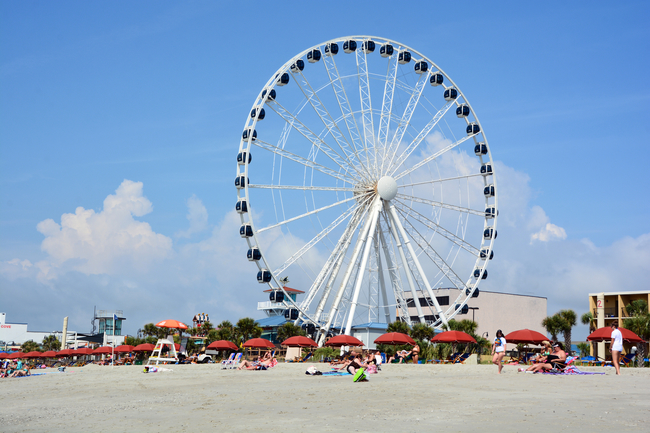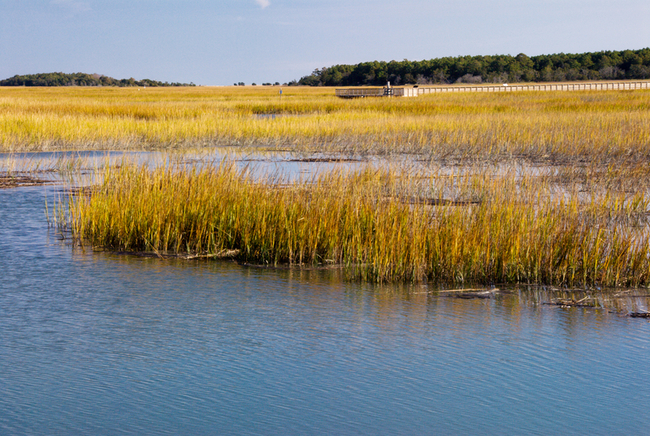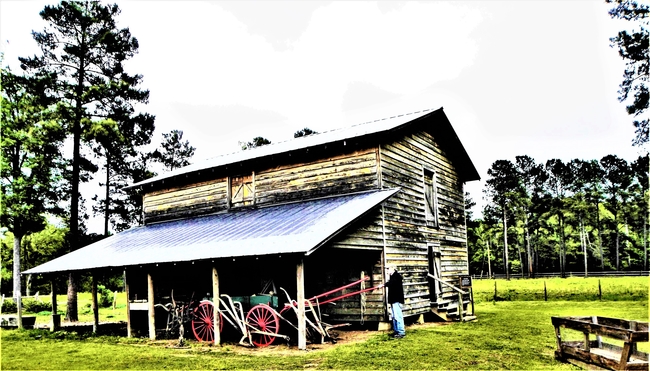

Myrtle Beach, South Carolina, and the surrounding Grand Strand, are back. Sun seekers are hitting the beaches, golfers are working on their drives and putts, and visitors are enjoying the appeals that each year attract some 20 million people.
Like other destinations around the United States, which are gradually returning to what’s called the “new normal,” there are differences from the way things were only months ago. But any inconveniences pale when stacked up against what the area has to offer.
Given the choice of more than 100 excellent golf courses, Myrtle Beach itself is a magnet for both low-handicap players and casual duffers. But beyond the fairways and greens, augmenting the sun and sand are history-rich towns, reminders of southern plantation life and captivating cultural tidbits.

Myrtle Beach sits near the middle of the “Grand Strand,” the name given to a dozen towns strung out along South Carolina’s Atlantic coastline. Each community has its own intriguing story to tell.
Myrtle Beach, South Carolina: Where the Action Is
Myrtle Beach offers the greatest concentration of hotels, restaurants, shopping and nightlife. Much of the action takes place along the bustling 1.2-mile oceanfront boardwalk. Overlooking the scene is the SkyWheel, a giant-sized observation wheel which transports passengers 187 feet into the air and provides a bird’s-eye view over the surroundings.

The town of Georgetown already was a major sea port for the British colonies when it was officially founded in 1729. Some of the gracious homes that line oak tree-canopied streets were built before the American Revolution. Exhibits at the Rice Museum relate how the rice culture evolved in South Carolina and brought extreme wealth to many planters.
Pawley’s Island, several miles further north, became a summer retreat for some of those wealthy planters. A number of their homes that still stand are identified by markers which relate their history.
Nearby Murrell’s Inlet earns its reputation as the “Seafood Capital of South Carolina.” Fresh fish, crabs, oysters and clams are pulled from the surrounding waters. Fishing boats and pleasure craft keep the town’s 400-foot-long boardwalk bustling, which overlooks salt water marshes that dominate much of the local landscape.

Perched near the northern end of the Strand, Atlantic Beach in the early 1930s became a popular vacation destination for African-American families. Some residents of that community, and others, are descendants of the Gullah-Geechee people, and retain their unique culture.
Rice and Slavery Are Part of South Carolina’s Past
When the early plantation owners realized that the area’s climate and tidal rivers provide perfect conditions for growing rice, they brought slaves from West African countries, where that crop had been raised for centuries. The Africans’ knowledge of rice cultivation was largely responsible for the success of planters in the southeastern United States.
Many slaves developed a unique language and clung to their African cultural traditions. These included ages-old rituals, arts and crafts, food and other facets of their lifestyle.
Descendants of those slaves still live where their ancestors did, in a narrow band stretching from the coastline of North Carolina to Florida. The people in the northern section of this area are known as Gullah, while those further south are called Geechee. Visitors are surrounded by reminders of this fascinating story, some in surprising places.
For example, a putting green on the golf course at the Barefoot Resort is nestled against the recreated ruins of a plantation home, and the Willowbrook golf course is laid out on land that once comprised rice plantations. Another course was constructed on the site of a former plantation that included an early slave cemetery. That prompted the Gullah woman who pointed it out to me to remark, “My grandfather is buried under the 10th hole.”
Gardens, Plantations and More Along the Grand Strand in South Carolina
Brookgreen Gardens, a National Historic Landmark, also has a close connection with Gullah history. It encompasses four former rice-growing estates including Brookgreen Plantation, which was built by slaves in the 18th century. The expansive lawns serve as a showcase of gardens, nature and art, including one of the largest and best collections of American figurative sculpture in the world.

While not as grand as the setting at Brookgreen Gardens, the rice plantation named Hopsewee (pronounced HOP-suh-wee) has other claims to fame. Built between 1735 and 1740, the graceful home is among the oldest preservations in the country which are open to the public. The original owner, Thomas Lynch, Sr., was an early leader in the American Revolution, and his son was a signer of the Declaration of Independence.
Another chapter in the history of slavery is recounted at Freewoods Farm, which was the center of a community established by freed slaves at the end of the American Civil War. The 40-acre spread is the only living history museum in the United States that recreates life on farms owned by African-Americans during their first decades of freedom. The land is tilled using plows pulled by mules, crops are harvested by hand, and syrup and soap are made the time-consuming way they were over a century ago.

The sight of farmers toiling in fields is very different from stately plantation homes. Occasional touches of honky tonk tourist attractions contrast sharply with the laid-back island lifestyle to which many area residents cling with a kind of stubborn pride.
Throw in a fascinating history and you have an idea of what awaits visitors to Myrtle Beach and the Grand Strand. Not to mention those beautiful beaches and inviting golf courses.
For more information log onto www.visitmyrtlebeach.com
Authors: Fyllis Hockman and Victor Block are a husband-wife team of experienced travel journalists who have gallivanted throughout the United States, and to nearly 80 countries around the world, and written about what they have seen, done and learned. Their articles have appeared in newspapers across the country and on websites across the Internet, and they each have won numerous writing awards. They love to explore new destinations and cultures and uncover off-the-beaten-path attractions. Read more of their work at The Rambling Writers
